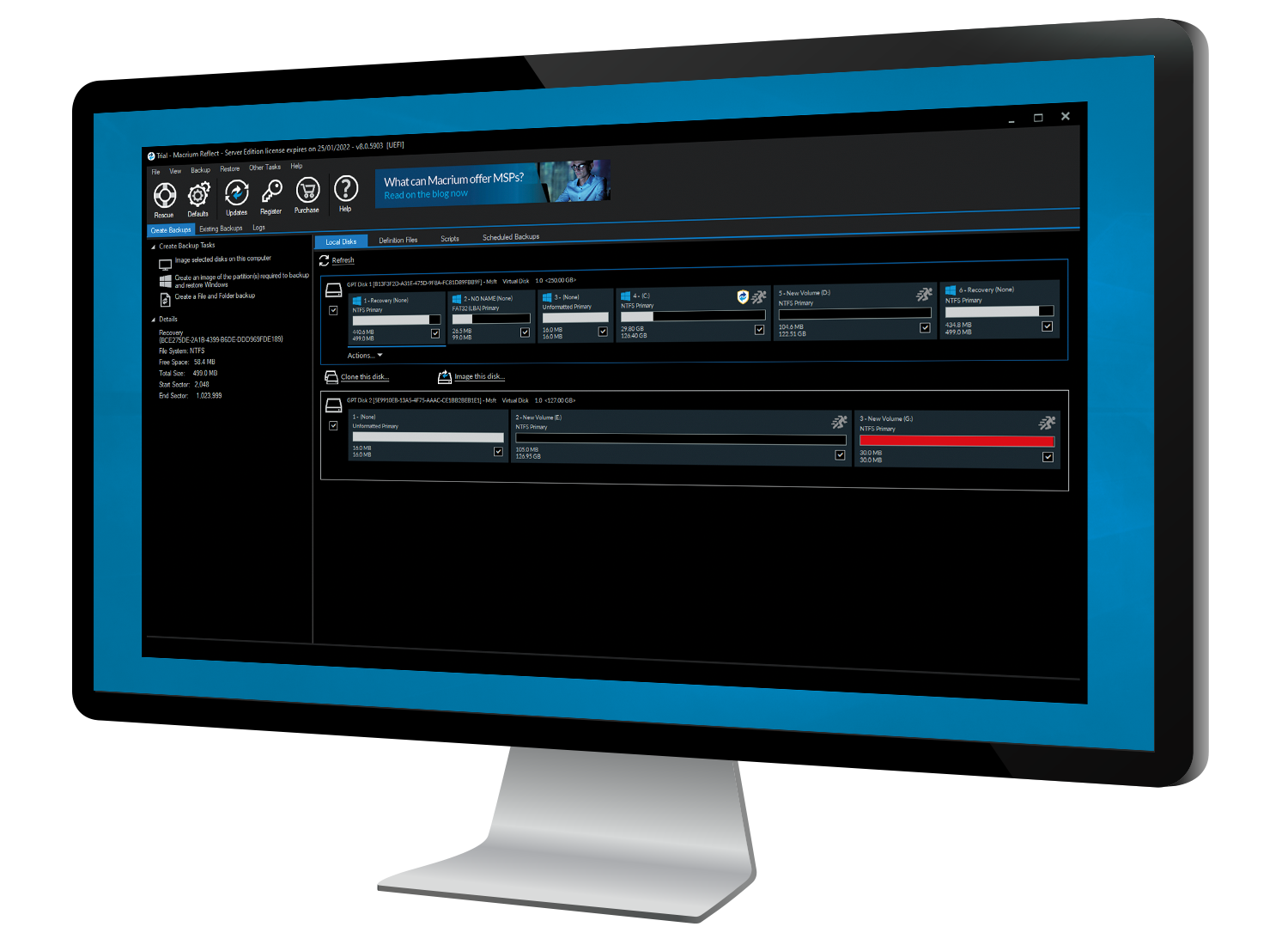

Introducing Macrium Reflect the software will able to clone your hard drive, Drag and drop user interface, Server ReDeploy, WinPE 3.1 rescue environment, WinPE driver support, Linux 3.0 kernel, UEFI Support, Direct disk cloning, Integrated email component, Reorder and resize partitions, Restore multiple partitions, File & Folder backup NTFS permissions and compatible with Windows OS or Windows Server. Using this software, you will able to protect your personal files, documents, memorable photos, favorite music and important emails. The disk will now be usable.Are you having trouble how to recover your files after a complete disaster? but this time you need to be more prepare and you don’t want that to be happen again. If you don't type this command, the disk will be initialized as legacy MBR.ĩ. GPT tends to be a more resilient file system and I therefore recommend using it, but isn't readable by Windows XP if that's an issue. If instead you wish to start using it just as a data disk, continue below.Ħ.

If you will be installing another OS on it later, leave it as-is and Windows Setup will partition it properly for that use case. The disk will now show as empty and uninitialized.ĥ. Note the number corresponding to the disk you want to wipe, then type "select disk x", substituting that number for "x".Ĥ.

From Windows booted from the new drive or a Rescue environment, open Command Prompt and type "diskpart".ģ. Note that this is NOT a "secure wipe" that actively erases data on the disk it instead just marks the disk as empty, so if you have sensitive data on the disk and weren't using whole disk encryption, you might want to consider other methods: If you WERE using encryption, then no worries.ġ. But if you WANT to wipe your old disk, the instructions below will do so and can be run from Windows after booting on the new disk or from a Rescue environment. If you're using UEFI booting, identifying which is which might be tricky because they'll both be called "Windows Boot Manager" and the path details will involve a GPT partition GUID, although some UEFI firmwares will actually show the device name somewhere for convenience as well. You shouldn't have to wipe the old SSD just to get Windows to boot off of the new one just go into your BIOS and change the boot order to put the new SSD on top.


 0 kommentar(er)
0 kommentar(er)
